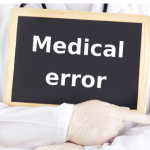Anchoring: The tendency to rely too heavily on one trait or piece of information when making decisions.
Ascertainment bias: Occurs when a physician’s thinking is shaped by prior expectations, stereotypes, and biases.
Availability: The tendency to assign a probability to a disease according to vividness of memory.
Base rate neglect: The tendency to base judgments on specifics, ignoring general statistical information.
Commission bias: The tendency toward action rather than inaction stemming from either overconfidence or perceived pressure and desperation to “do something.”
Diagnostic creep: Through the presence of medical intermediaries, what might have started as a possibility eventually becomes definite, and all other possibilities are excluded.
Attribution error: The tendency to be judgmental and blame patients for their illnesses (dispositional causes) rather than examine the responsible circumstances (situational factors).
Confirmation bias: The tendency to search for or interpret information in a way that confirms one’s preconceptions.
Omission bias: The tendency to judge harmful actions as worse than equally harmful omissions (inactions).
Order effects: The tendency to remember the beginning part (primacy effect) or the end (recency effect).
Outcome bias: The tendency to judge a decision by its eventual outcome instead of on the quality of the decision at the time it was made.
Gambler’s fallacy: The tendency to think that future probabilities are altered by past events, when in reality they are unchanged.
Gender bias: The prejudice in action or treatment against a person on the basis of their sex.
Hindsight bias: The tendency to see past events as being predictable.
Multiple alternatives: A multiplicity of options on a differential diagnosis may lead to significant conflict and uncertainty. The process may be simplified by reverting to a smaller subset with which the physician is familiar but may result in inadequate consideration of other possibilities.
Overconfidence effect: Excessive confidence in one’s own ability to answer questions, reflecting a tendency to act on incomplete information, intuitions, or hunches.
Psych-out error: The tendency to attribute serious medical conditions to psychiatric conditions.
Representativeness: Thoughts that are guided by a prototype so that possibilities that contradict the prototype are not considered, resulting in attribution of symptoms to the wrong cause.
Search satisficing: The tendency to stop searching for a diagnosis once you find something satisfactory.
Sutton’s slip: The diagnostic strategy of going for the obvious instead of sufficiently considering alternative possibilities.
Triage-cueing: The triage process prevalent throughout the health care system, from the self-triage of patients to the selection of a specialist by the referring physician, which allows for the triage decisions to ultimately influence patient diagnosis and care.



